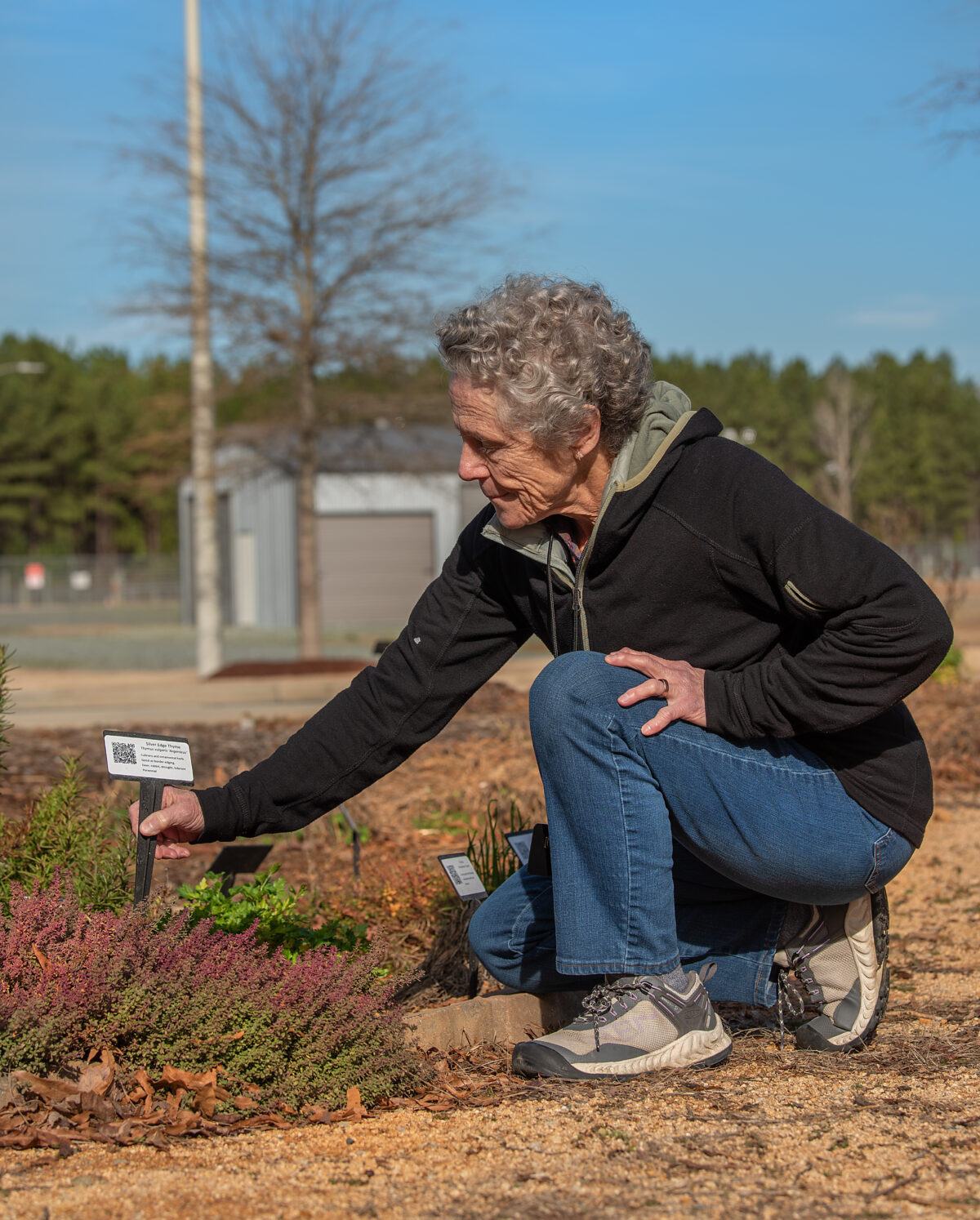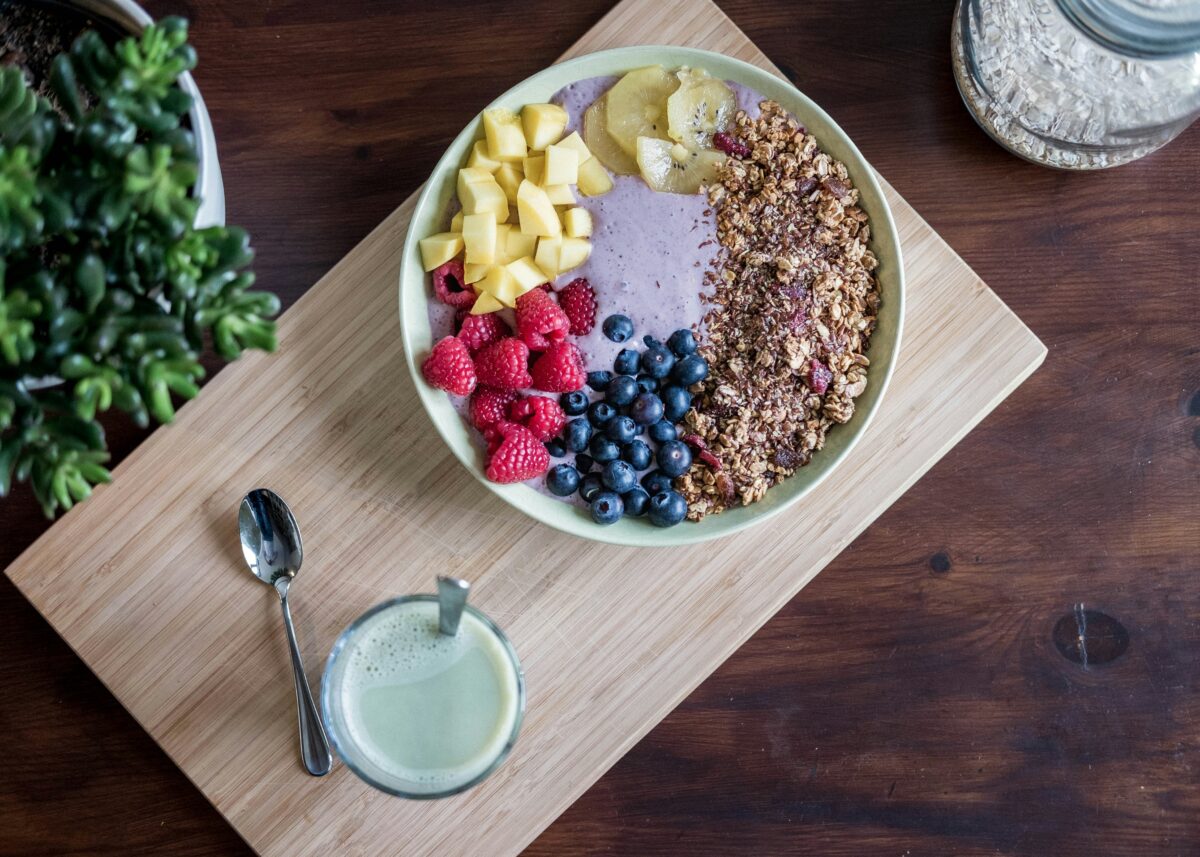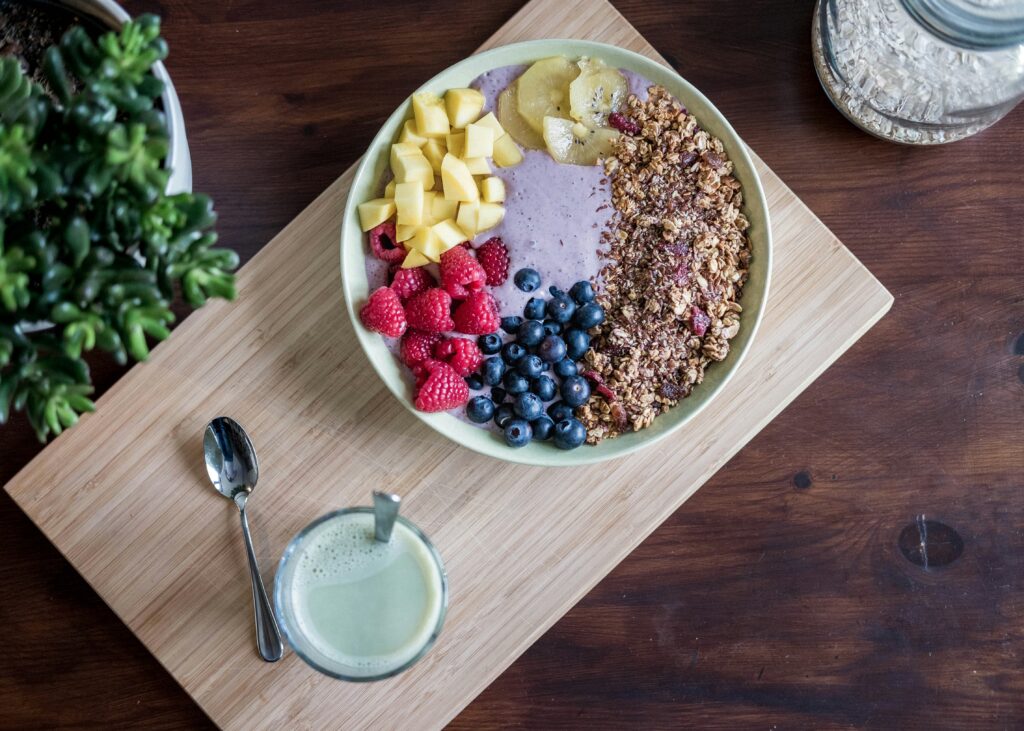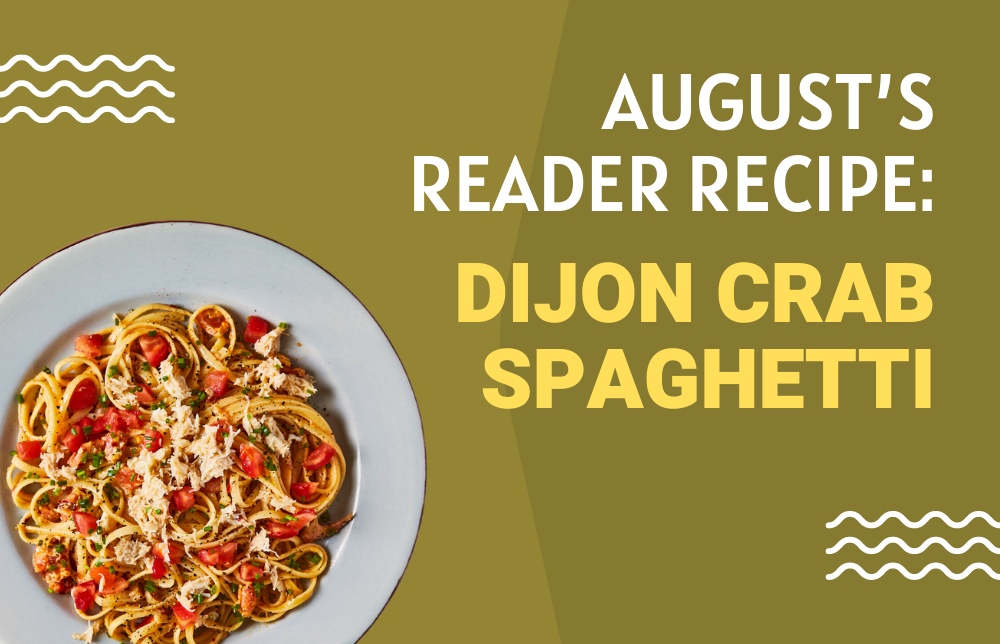Gardening for Good
Spring Edition 2024 | Living Power Magazine
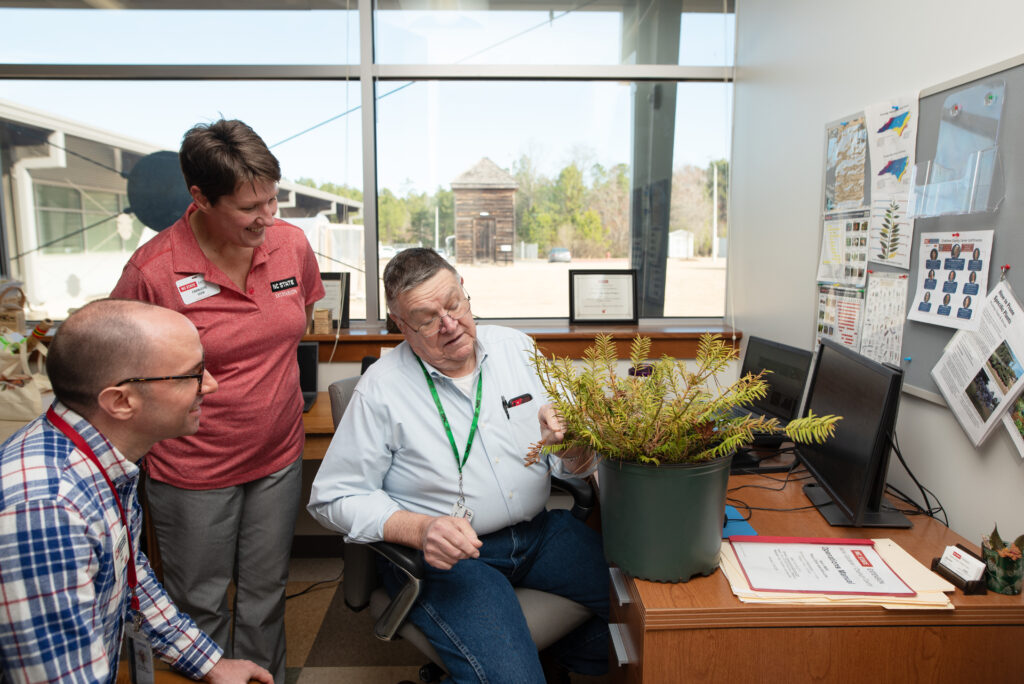
Of all the post-retirement activities and hobbies, gardening ranks among the top pursuits of those with more time to spend on the things they love—and no wonder. A study published last year in the journal The Lancet Planetary Health found people who garden, particularly in community gardens, increased their overall well-being by exercising more, eating more fiber, and staying connected to others in their community. A 2018 study from the journal Clinical Medicine found that gardening reduces stress and can also lower the risk of developing dementia.
The benefits of gardening, however, go far beyond the personal. Some have found ways to garden that also benefit the environment, those with food insecurity, and the community at large.
Master Plan
In 1979, NC State Extension launched its volunteer initiative to help guide homeowners in making environmentally sound decisions in their landscapes. Now 45 years later, the NC State Extension Master GardenerSM program has grown to an extensive network with outposts in every county in the state, with volunteer opportunities in 75 counties.
“These are programs that engage people from the community—local citizens and residents and people who are interested in learning more and also want to volunteer,” says Charlotte Glen, NC State Extension Master Gardener program manager.
The Extension Master Gardener program isn’t simply a horticulture class. While participants do learn about gardening best practices during their training—which includes 40 hours of instruction and a 40-hour internship—those skills simply serve as the basis of the real work done by volunteers.
Once trained through their local extension office, volunteers begin working in their communities on projects that include installing plant labels with QR codes linked to the Extension Gardener Plant Toolbox—the extension’s plant database—in demonstration gardens. Both those initiatives, alongside workshops and other educational outreach, are designed to educate the community about growing their own food, as well as planting gardens that benefit local ecosystems.
“With our Extension Master Gardener program, we’re focusing on home gardening,” Glen says. “The goal is improving quality of life and helping people have access to fresh fruits and vegetables and helping people take care of their yard in a way that protects the environment.”
Extension Master Gardener volunteers also have been instrumental in setting up and maintaining community gardens across the state. These gardens, along with home gardening initiatives, have become an important part of the Extension’s work to reduce food insecurity in North Carolina.
“There are a lot of different activities across the state around helping people grow their own food, whether it’s starting a garden in their yard, being more successful with their gardening, or working with community gardens,” Glen says. “It’s building local production so people don’t have to rely on food being shipped in from somewhere else to a grocery store that may be miles from their home.”

Susan Levy (right) lead therapeutic horticulture activities for
groups at the Siler City Center for Active Living.
Photos by Steve Broscious
Some Extension Master Gardener volunteers also operate therapeutic gardening programs, designed to improve both physical and mental health in their community. “They’re helping people through gardening, basically helping them improve their health and wellbeing,” Glen says. “The program helps whether it’s physically through the exercise of gardening, or mentally, because there are so many benefits of being around plants.”
Master Gardener volunteers also sometimes get to be a part of statewide research initiatives conducted by NC State, such as a recent study that explored how managing perennial stems increases the ability of residential landscapes to provide habitat for some pollinators, such as bee and wasp species that live and reproduce in plant stems.
“We had volunteers in different counties across the state collecting stems and sending them to some of our researchers on campus, and lo and behold, they found pollinators in them,” Glen says. “And that’s the land grant’s mission—to do research and then through Extension, take that information out to the people and make a difference.”
Glen says the Extension Master Gardener program offers a wide range of roles across the state, and no matter the job, those who give their time can be certain they’re making a difference in not only their community, but the world. “It’s not just a gardening class,” she says. “It’s for people who want to learn about gardening, and then use that knowledge to help others.”
To learn more about the NC State Extension Master Gardener volunteer program, visit EMGV.CES.NCSU.edu.
A Fresh Perspective
During her tenure as principal of a K–12 school that catered to students with significant intellectual and physical disabilities, Kelli Howe knew she wanted to enact programs that would prepare these kids to obtain jobs upon graduation.
Outside the facility, several old greenhouses stood in a state of disrepair, remnants of a horticulture program the school offered during the 1970s and ‘80s. Howe thought they could be salvaged and obtained funding from the school board to refurbish them. Around that time, an acquaintance brought Howe an article about the Charlotte-based nonprofit 100 Gardens, which builds and operates aquaponic gardens in schools, prisons, and communities in need.
“I learned about aquaponics and it seemed to be the perfect fit because it’s very repetitive, predictable, and schedule-driven, which is what a lot of special needs students, especially students with autism, need,” she says.
Aquaponics is a farming method that raises edible freshwater fish and vegetables together in a symbiotic environment. A tank holds fish, such as tilapia or catfish, which provide natural fertilizer for vegetables that are rooted in water in a separate tank. The vegetables absorb nutrients from that fertilizer, providing clean water that goes back to the fish.
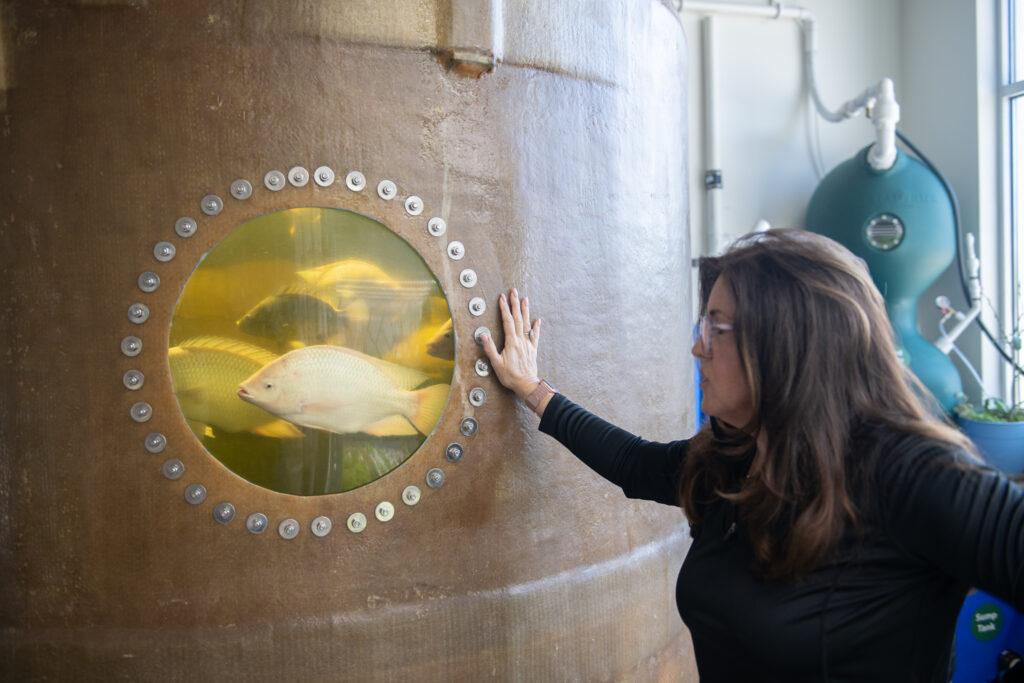
“We started off in a very small way—we raised about $2,500 and got one very small table, one tank, and seven fish,” Howe says. “We trialed that for about five months, and the kids loved it.”
That first tank led to a larger enterprise at the school that still operates today and provides all the lettuce for a local restaurant. After Howe retired, she joined the board of 100 Gardens and now works with the nonprofit as education director to install aquaponic systems in schools and other locations across North Carolina. She says she enjoys the work she does with 100 Gardens not only because it’s fun, but also because it gives her a chance to enact change that can potentially improve our environment.
“It’s a relationship—aquaponics is a symbiotic system, and that’s the same way I’ve always felt about the earth,” she says. “These gardens are a way to show people their impact on the earth and how if we don’t improve our situation, we will no longer be able to garden outside. It just gives a different perspective.”
To learn more about aquaponics, visit 100Gardens.org.
Sustainable Seeds
Teri Stanley has always loved gardening. Growing up in a farming family, she developed an early appreciation for cultivating plants, be they vegetables or flowers. After retiring from Nash County Schools, Stanley dedicated more time to gardening, and she found she liked starting from scratch with seeds rather than buying plants.
“I like flowers, and it’s nice to plant from seeds, so you know what you’re getting,” she says. “I also like to have fresh vegetables—it’s nice to go in the yard and pick things and know where they came from.”
While the growing season is pretty long in North Carolina, Stanley says you have to start planting prior to the last frost to have flowers and vegetables—which can take months to grow—ready when summer hits. So she devised a way to recycle items from her home to create mini-greenhouses for seedlings.
Stanley uses empty plastic juice bottles and milk jugs filled with dirt to plant her seeds, putting them outside in her raised beds to grow. She says not only do the containers protect the tender sprouts from the cold, bugs, and birds, but they also facilitate a more conducive growing environment than indoors.
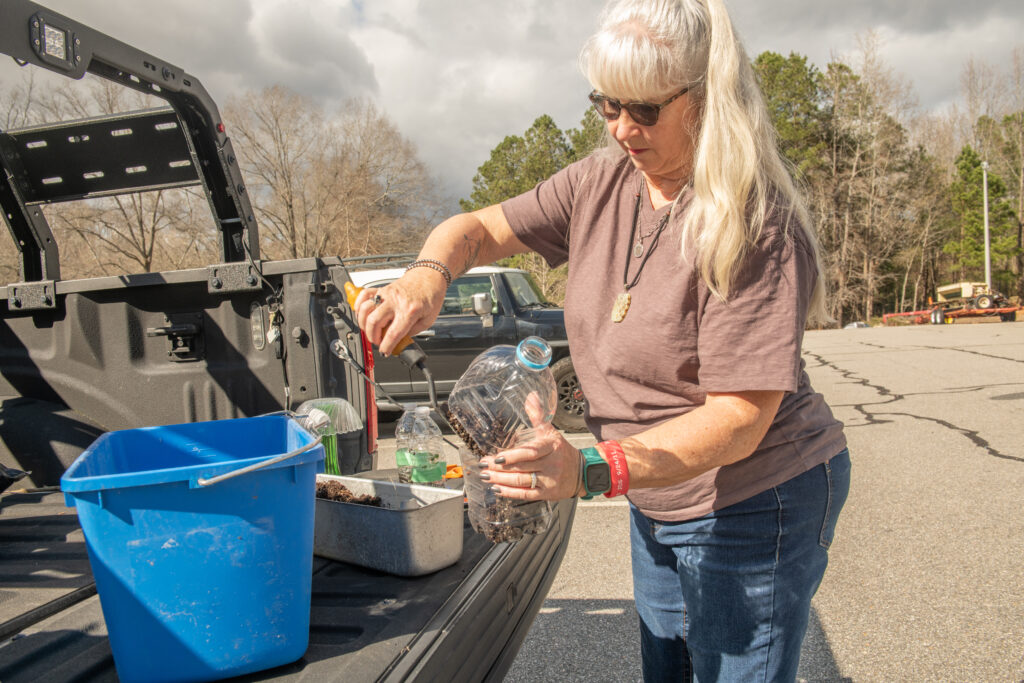
“When you grow seeds inside, they get kind of leggy, and this keeps them from getting leggy,” she says. “Plus, they are more acclimated to being outside, so it’s easier to transplant them from the container.”
Stanley says her homemade greenhouses allow her to garden not only more successfully, but more sustainably, as well. And she says this method reduces the investment in planting a garden, making it accessible to just about anyone.
“I try to recycle as much as I can,” she says. “And with that and a packet of seeds, even if you don’t have good luck with your plants, you’re wasting maybe a dollar or 50 cents. But I promise you, if those seeds do come up, they will make you feel so good.”



